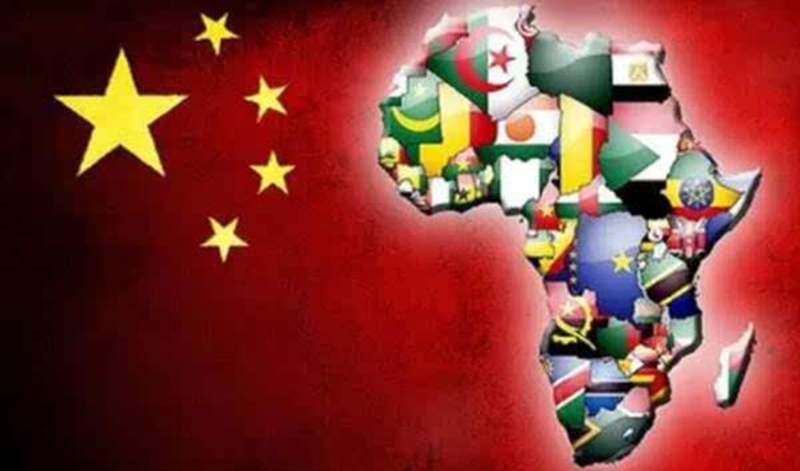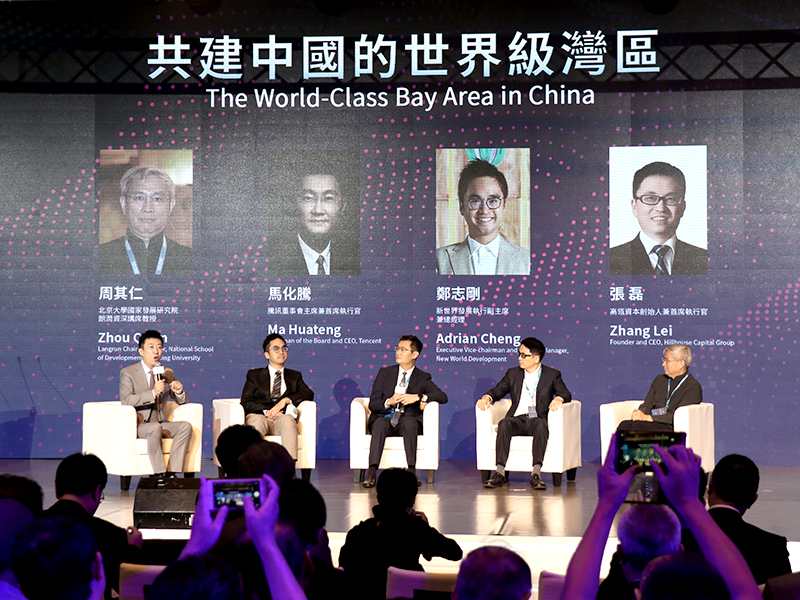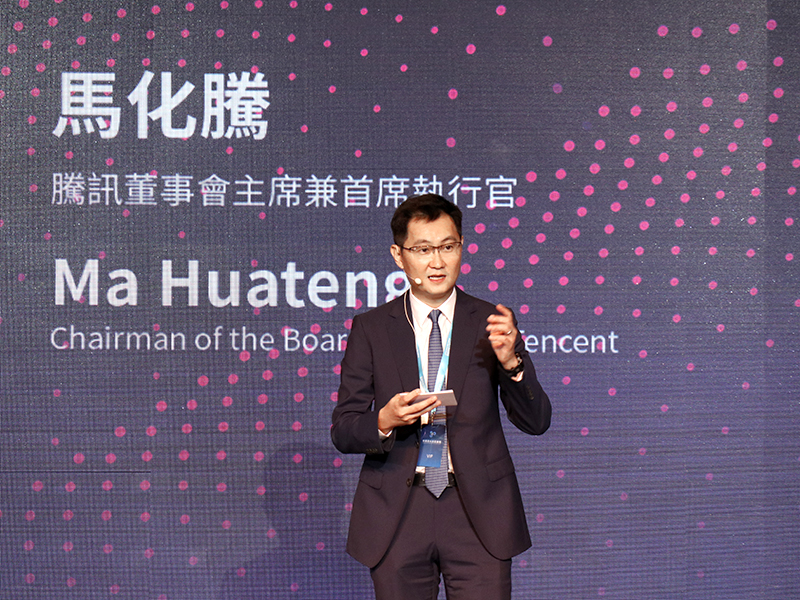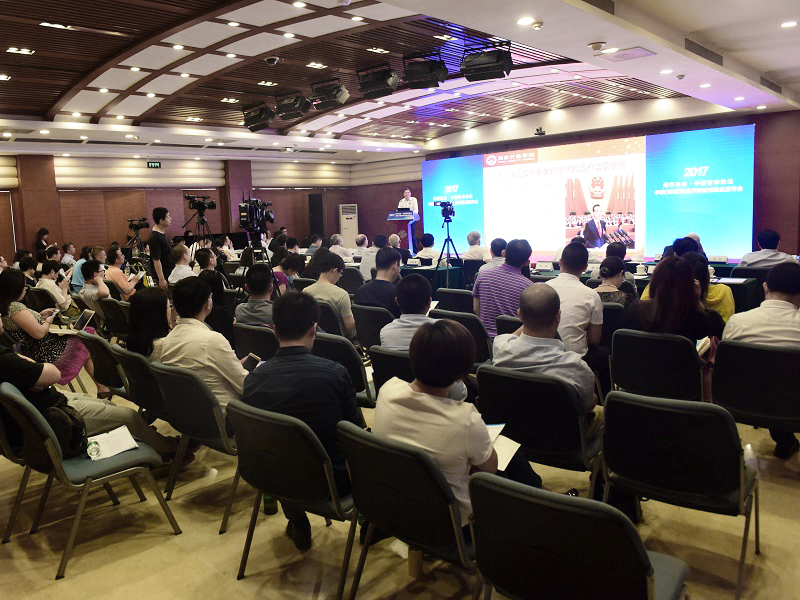Positive Trends in Trade and Investment Cooperation between China and Pacific Islands
 Author: Hu Zhenyu, Director, Department of Sustainable Development and Maritime Economy, CDI, Zhou Yuyi, Research Associate, Department of Sustainable Development and Maritime Economy, CDI
Author: Hu Zhenyu, Director, Department of Sustainable Development and Maritime Economy, CDI, Zhou Yuyi, Research Associate, Department of Sustainable Development and Maritime Economy, CDI
Editor’s Note: The Pacific Island countries are faced with significant environment pressure and pressing needs for development at present. While growth in global trade has slowed down, development in trading between China and the Pacific Island countries has developed rapidly. Thus, China should strengthen research on the Pacific Island countries so as to promote extensive, efficient and pragmatic collaborations with them.
The Pacific Islands, including 27 nations and regions in the Pacific Ocean except Australia and New Zealand, is a part of the 21st Century Maritime Silk Road. Affected by natural disasters and increasing temperature, the Pacific Islands are exposed to significant environmental pressure and pressing needs for development. China's proposal of establishing a “community of human shared destiny” is well-received by the island nations.
Due to disparity in resources, uneven developments exist among the Pacific Island countries. Although Papua New Guinea holds comparative advantages in territory size, total economic output and natural resources, its GDP per capita remains at a relatively low level due to outdated technology and equipment. With an abundance of tourism resources and accessible transportation, Fiji has emerged as a key tourism spot in the Pacific. Other island countries such as Niue, Cook Islands and Palau also post GDP per capita above USD 10,000.
Though growth in global trade is currently bogged down in a slump, trading between China and the Pacific Islands has shifted into high gear, with total volume of import and export surging from USD 4.3 billion to USD 7.5 billion, a jump of 73% and an annual growth rate of approximately 15%. Main exports goods to the island countries include machineries, electronics, automobiles, ships and light industrial products, while items imported to China from the Pacific Islands are comprised mainly of fish products and natural resources.
China's primary trade partners in the Pacific Islands region are Marshall Islands, Papua New Guinea and Solomon Islands. In 2015, trade volume between China and the three major Pacific trading partners amounted to USD 6.7 billion, accounting for over 90% of trade between China and all Pacific Islands.
In addition, due to Fiji's strategic importance, its trade relations with China has blossomed and Fiji is now China's number four trade partner in the Pacific Islands region. Since the proposing of the Maritime Silk Road concept, economic and trade development between China and the Pacific Islands has been climbing by leaps and bounds.
Yet, obstacles are in the way of deeper cooperation between China and the Pacific Islands. It would be necessary for China to conduct further research on the politics, economy and culture of the Pacific Island countries, so as to promote extensive, efficient and pragmatic collaborations with them.
What is the Root of High Housing Price?

Author: Fan Gang, President, CDI
Editor’s Note: Although the real estate market has gone through a tortuous development process, there still remains a huge potential. So how can the real estate industry realize sound development?
Why is there high housing price? Because there is high price of land auction and the land price is derived from the real estate price. The expected housing price in the area in the future is higher than the present will lead to higher land prices. If the government does not interfere and lets the market continue to overheat, it may lead to a crisis. So how can the real estate industry realize sound development?
Firstly, in terms of demand, an automatic stabilizer, namely, house property tax is needed. If there is an automatic stabilizer for the demand side, administrative measures are not necessary since taxes and leverage can automatically play their roles in stabilizing the real estate industry.
Secondly, in terms of supply, correct the deviation of the urbanization strategy. Current policies mainly focus on encouraging the development of small towns and cities and limiting the development of large cities and it causes excessive land supply in small cities. However, over the past three decades, most of the population migrated to large cities, indicating that our land policies have not kept pace with the law of population migration and urban development.
Thirdly, to solve the real estate problem from the root is to solve the issues of strategies and systems rather than to ascribe the real estate problem to monetary issues. We should change some of the past strategies and policies and gradually withdraw administrative measures to promote the steady and healthy development of the real estate market.
Stronger Product and Service Alignment Crucial to Promoting China-Belarus Cooperation
 Author: Wang Guowen, Director, Department of Logistics and Supply Chain Management, Zhang Yiju, Research Associate, Department of Logistics and Supply Chain Management
Author: Wang Guowen, Director, Department of Logistics and Supply Chain Management, Zhang Yiju, Research Associate, Department of Logistics and Supply Chain Management
Editor’s Note: The mutual recognition and alignment of the standards for product and services at national strategic level and in the form of bilateral agreements is crucial to ensuring successful construction, implementation and operation of China-Belarus Industrial Park. As they participate in the Belt & Road projects, Chinese enterprises should participate in the formulation of policies, regulations, standards and processes in the host country of the projects, and actively promote the alignment of China’s standards with the local standards in the host country.
In recent years, major projects of China-Belarus cooperation have been pushed forward in the process of Belt & Road construction. China-Belarus Industrial Park is a signature project in China and Belarus’ joint effort to build the Silk Road economic belt. According to planning objectives, China-Belarus Industrial Park will attract over 200 high-tech enterprises and create 120 thousand jobs, as it is integrated into a new international airport city with a population of 200 thousand.
The major projects of China-Belarus cooperation have won policy support from the government of Belarus, providing favorable conditions for China-Belarus cooperation. However, the lack of mutual recognition and alignment of China’s standards and the local ones in Belarus has hindered the development of cooperation projects between the two countries. The lengthy certification process has severely affected the schedule. Moreover, the lack of alignment in service standards between China and Belarus poses a potential policy risk, potentially reducing the efficiency of construction and operation of the park. In addition, the lack of mutual recognition and alignment in management processes has added unnecessary daily operation costs for Chinese businesses.
The practical experience of China-Belarus Industrial Park and other cooperation projects testify to the necessity of standard alignment between China and the host country at a national strategic level in a bid to raise the overall efficiency. Here are three proposals: first, incorporate the mutual recognition of standards into bilateral cooperation, and sign detailed bilateral agreements to fully align China’s standards and the local standards. Second, conduct research on the development strategies, laws and regulations, standard systems and access management systems of countries and regions along the belt and road, so as to provide intellectual support for Chinese businesses going global. Third, encourage Chinese businesses and institutions to participate in the drafting of international standards, and work towards higher levels of international standardization.
Improve Business Environment to Facilitate the Development of Sri Lanka-China Industrial Zone

Author: Yu Zongliang, Research Assistant, Department of Regional Development Planning, CDI
Editor’s Note: China is Sri Lanka’s largest trading partner and the most important investor. The Sri Lanka-China Industrial Zone will become an important platform for Chinese enterprises going global as well as the industrial capacity cooperation between the two countries. However, the business environment of Sri Lanka needs further improvement, for which it is important for China and Sri Lanka to enhance communication on legal policies and improve environment for investors to jointly promote the development of the Sri Lanka-China Industrial Zone.
Sri Lanka occupies a strategic position in South Asia and has a liberalized economic system. Sri Lanka’s program for economic development prioritizes export as a national strategy in developing an export-oriented and import substituting economy in a bid to build Sri Lanka into an economic hub along the modern Silk Road in Asia. However, Sri Lanka remains an agricultural country with weak industrial foundation, unbalanced trade mix, and slow development of industrial zones.
At present, 16 industrial zones can be found in Sri Lanka, which are mainly focused on textile and clothing, along with other industries such as food processing, chemicals, automobile, IT, and education. Currently, Sri Lanka's industrial zones face a range of problems including limited space, small scale of businesses, limited industrial combined effect, and insufficient capacity of government in providing public services. Overall, Sri Lanka's industrial zones need further improvement in business environment and higher levels of economic development.
With the economic and trade ties between China and Sri Lanka becoming ever closer, China has seen fast increases in its investment to Sri Lanka, with Chinese companies deeply participating in the construction of sea ports, air ports, power stations and other important infrastructures. China became Sri Lanka’s biggest trading partner and source of imports in 2016. China should further enhance communication with Sri Lanka at a legal level, and help Sri Lanka to constantly improve the business environment of its industrial zones. First, China and Sri Lanka should sign a treaty of international legal significance, which covers free trade talks on trade in goods, trade in services, investment, economic and technological cooperation, etc. Second, Sri Lanka should introduce top legislation to regulate industrial zone development, further strengthen guarantee mechanism to safeguard the rights of investors. Third, Sri Lanka should put in place bilateral or multilateral national economic and diplomatic mechanisms with its trading partners for effective communication and coordination, and create high-level dialogue mechanisms for industrial zone development.
International Industrial Transfer: Sino-African Cooperation
 Author: Huang Rui, Postdoctoral Researcher, CDI
Author: Huang Rui, Postdoctoral Researcher, CDI
Editor’s Note: With the concept of mutual benefit and win-win cooperation in the "Belt and Road" initiative, the cooperation between China and Africa in production capacity and equipment manufacturing has developed rapidly following the rules of market. Meanwhile, it has also improved Africa's infrastructure and industrial systems.
Since the implementation of the reform and opening up policy in 1978, China has experienced rapid development as it makes full use of its labor force, resources and market advantages in the past 30 years. With the optimization and upgrading of China's industries, China’s industry has begun to move on to oversea. Africa has gradually become a key destination of China's capital and technology exports. For the further Sino-African cooperation under the "Belt and Road" initiative, China should follow the rules of industry transfer and focus on investment economics and social efficiency.
In recent years, China has built a number of railways and industrial parks in Africa through the cooperation between international capacity and equipment manufacturing. The railways China builds in Africa connect the continent’s ports and resource-rich inland cities. Such a “railway-port” mode provides Africa with advanced transportation basis for industrial development and stimulates the export of China's steel, locomotives, cement and communications equipment. The overseas economic and trade cooperation zones that China has established in Africa are all based in the cities along the railways built by China. They are solid industrial bases for the host countries, meanwhile; further the development of Sino-African capacity cooperation and China’s industrial transfer.
With the development of Sino-African cooperation, China's industrial layout in Africa has gradually unveiled with the combination of railways, ports and industrial parks. There is still room for improvement. First of all, to ensure the sustainability of the "Belt and Road” projects, we should utilize the railway network to prop up the industrial network. Secondly, we should promote the smooth development of industries transferred from China to Africa. Thirdly, as more enterprises settle down in overseas economic and trade zones, we should gradually enhance the combined effect among enterprises for the cooperation of industry chains.
Guo Wanda Talks about the Development of Innovative Manufacturing in Shenzhen
 In the interview with CGTN on June 27th, Dr. Guo Wanda, the Executive Vice President talked about advantages of Hong Kong business environment and the important role of Shenzhen manufacturing system in terms of the development of the Guangdong-Hong Kong-Macao Greater Bay Area. The future cooperation between Hong Kong’s knowledge industry and Shenzhen’s manufacturing sector can be expected.
In the interview with CGTN on June 27th, Dr. Guo Wanda, the Executive Vice President talked about advantages of Hong Kong business environment and the important role of Shenzhen manufacturing system in terms of the development of the Guangdong-Hong Kong-Macao Greater Bay Area. The future cooperation between Hong Kong’s knowledge industry and Shenzhen’s manufacturing sector can be expected.
The following article drawn from a CGTN news entitled “Innovative and advanced manufacturing in Shenzhen”.
Guo Wanda, an expert in Hong Kong studies explained how the twin can cities collaborate to build the new Bay Area.
“Hong Kong’s low taxes, highly efficient legal system, as well as its business environment have made it impossible for other cities, including Shenzhen, to replace it. One way for the cities to cooperate, I always say, is to establish links between the top universities in Hong Kong and the manufacturing sector in Shenzhen. A soup with these two elements mixed together would taste great! ” said Wanda.
“With its high-end manufacturing and high-tech, high added-value production, Shenzhen could be an engine that powers the development of the Guangdong-Hong Kong-Macao Greater Bay Area, and integrates resources in the region.”
Today, Shenzhen’s entrepreneurs no longer think about making cheap items. Instead, they focus on bringing new and unique products to the global market, which is helping China’s manufacturing sector transform into a global leader in innovation.
View the full video version: https://news.cgtn.com/news/3d51544e7955444e/share_p.html?from=singlemessage&isappinstalled=1
Indian Think Tank Delegation Visits CDI

On June 27th, Indian think tank delegation visited CDI and conducted discussion with Executive Vice President Dr. Guo Wanda. The roundtable discussion focused on land issues in urbanization, labor force circulation between cities and rural areas, income system in Shenzhen, and status quo of manufacturing industry in Shenzhen.
Minister of Special Economic Zones of the Republic of Congo Visits CDI

On June 4th, Alain Akouala Atipault, Minister of Special Economic Zones of the Republic of Congo, visited CDI and held discussion with Dr. Qu Jian, Vice President of CDI.
Dr. Qu introduced the history, category, supervision and experience of Chinese Special Economic Zones and gave suggestions for Pointe-Noire Special Economic Zone. Afterwards, SEZ minister Alain Akouala Atipault introduced how to invest in Pointe-Noire Special Economic Zone to ten Chinese companies. The next day, accompanied by Dr. Qu, SEZ minister Alain Akouala Atipault visited Shenzhen Yantian Port and Yantian Integrated Free Trade Zone.
Guangdong-Hong Kong-Macao Greater Bay Area Forum
Information
 Theme: Innovation-Driven Bay Area of China
Theme: Innovation-Driven Bay Area of China
2017 marks the 20th anniversary of Hong Kong’s return to China and the development plan for the Guangdong-Hong Kong-Macao Greater Bay Area, which will become a strategic “pivot” for the opening-up to the outside world and the “Belt and Road” initiative, was included into this year's Government Work Report. Holding discussions on scientific and technological innovation, talent flow and institutional integration, the forum is aimed at offering policy recommendations on the development plan for the city cluster.
Date: June 20, 2017
Host: CDI, One Country Two Systems Research Institute (OCTSRI)
Organizer: Tencent
Beijing Annual Meeting 2017 and the 6th China Soft Science Prize Award Ceremony
Information
 The annual meeting is intended to explore the way to update management procedures, regulations, concentrate and deploy resources efficiently with new economic engine introduced in place of the old one, as China’s economy is transitioning to a new normal. It is also serves as a dialogical platform for Chinese enterprises and the academia to seek policy proposals for the reference of policymakers.
The annual meeting is intended to explore the way to update management procedures, regulations, concentrate and deploy resources efficiently with new economic engine introduced in place of the old one, as China’s economy is transitioning to a new normal. It is also serves as a dialogical platform for Chinese enterprises and the academia to seek policy proposals for the reference of policymakers.
China Soft Science Prize is an award introduced and funded by SSSDF in 2010. Since 2015 the prize is assessed biennially. In order to ensure its independence, authority and inclusiveness, SSSDF assesses social science studies in a scientific, simple, practicable and impartial manner.
Date: June 20, 2017
Venue: Room 103, First Floor, China Hall of Science and Technology
Host: CDI, Shenzhen Soft Science Development Foundation (SSSDF)
Theme: New Economy and Old System











